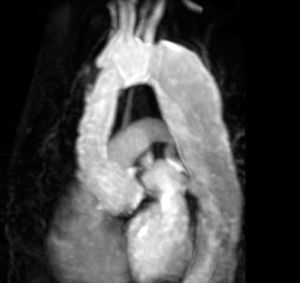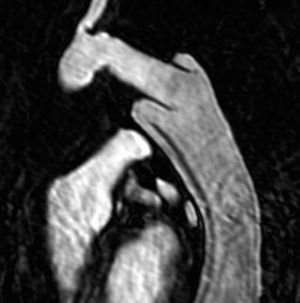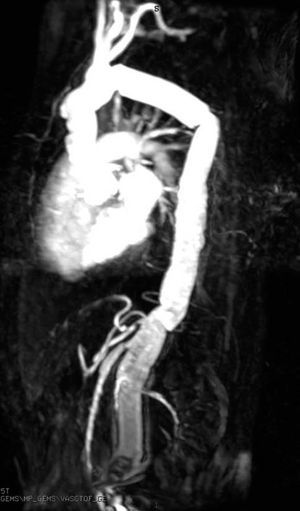A 39-year-old man with no known cardiovascular risk factors was hospitalized for chest pain radiating to the side. Type A aortic dissection was diagnosed by transthoracic echocardiography and computed tomography (CT). Urgent surgery was performed, in which the ascending aorta was replaced with a valved tube graft (Bentall-Bono procedure). The patient had a phenotype typical of Marfan disease: height of 190 cm, long limbs, scoliosis and dural ectasia.
Postoperative follow-up included yearly imaging studies with transthoracic echocardiography and magnetic resonance angiography of the aorta. Two years later, after the aorta had reached a diameter of 59 mm in the curve distal to the origin of the supra-aortic trunks (Figure 1), a second operation, consisting of an elephant trunk technique (Figure 2) with on-pump circulation and retrograde cerebral perfusion was performed to repair the arch. The patient was thus prepared for the third and last operation, performed three months later and involving replacement of the remaining descending aorta up to the iliac bifurcation. In this way, the entire thoracoabdominal aorta was replaced with a Vascutek tube graft, as is seen in the final magnetic resonance angiography image (Figure 3).
Figure 1.
Figure 2.
Figure 3.
Total thoracoabdominal aortic substitution was performed in our patient in three surgical stages, thereby altering the dismal natural history of these patients, characterized by high mortality at an early age.






